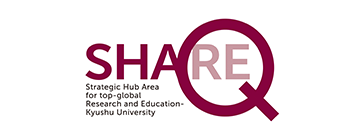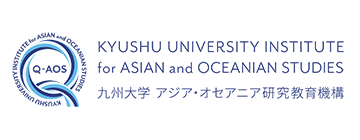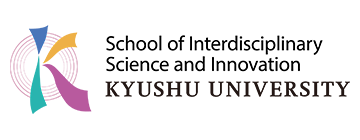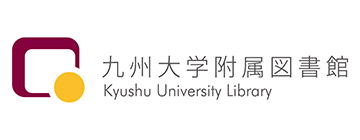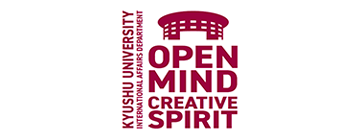Session 1: Medicine
Wednesday, September 9, 2020 Online
13:00-14:00 Research conference on gastroenterology
| 13:00-13:05 | Opening Remarks | Dr. Tomohiko Moriyama |
| 13:05-13:30 | Short-term and long-term outcomes of indigo naturalis treatment for inflammatory bowel disease |
Asst. prof. Yuichi Matsuno |
| 13:30-13:55 | Immunotherapy in biliary tract cancers | Prof. Jin-Hyeok Hwang |
| 13:55-14:00 | Closing remarks | Prof. Jin-Hyeok Hwang |
14:30-15:30 Advanced Surgery in Hepato- Pancreato-Biliary region
| 14:30-14:35 | Greetings | Prof. Shuji Shimizu |
| 14:35-15:00 | Laparoscopic Pancreatectomy based on the Precision Anatomy | Dr. Kohei Nakata, Prof. Masafumi Nakamura |
| 15:00-15:25 | Telemedicine in Surgery | Prof. Ho-Seong Han |
| 15:25-15:30 | Greetings | Prof. Ho-Seong Han |
16:00-17:00 Elderly Care in Korea and Japan: Current Issues and Future Prospects
| 16:00-16:10 | Greetings and Introductory Remarks | Prof. Masa HIGO. |
| 16:10-16:30 | Presentation 1: How to Improve the Quality of Care in Aged Society: A Focus on Comprehensive Geriatric Assessment | Prof. Cheol Ho KIM |
| 16:30-16:50 | Presentation 2: Geriatric Telemedicine: Why Is a ‘Hyper-Aged’ Japan Slow in Adopting It? | Prof. Masa HIGO |
| 16:50-17:00 | Q&A | Prof. Cheol Ho KIM Prof. Masa HIGO |
Speakers

Email: morimori@intmed2.med.kyushu-u.ac.jp

Email: ymatsuno@intmed2.med.kyushu-u.ac.jp
Short-term and long-term outcomes of indigo naturalis treatment for inflammatory bowel disease
Indigo naturalis (IN) is a traditional Chinese herbal medicine reported to be effective in inducing remission in ulcerative colitis (UC). We investigated the efficacy and safety of IN for induction and maintenance therapy in patients with inflammatory bowel disease. Data were collected from the electric medical records of patients with inflammatory bowel disease who had started IN treatment at Kyushu University Hospital. Clinical response, remission rates, cumulative IN continuation rates, and overall adverse events (AEs) were analyzed. Seventeen UC patients and eight CD patients were enrolled. Clinical response and remission rates at week 8 were 94.1% and 88.2% in UC patients and 37.5% and 25.0% in CD patients, respectively. Clinical remission rates, as assessed through non-responders imputation analyses at weeks 52 and 104, were 76.4% and 70.4% in UC patients and 25.0% and 25.0% in CD patients, respectively. Ten patients (40%) experienced AEs during follow-up. Three patients (12%) experienced severe AEs, including acute colitis requiring hospitalization in two patients and acute colitis with intussusception requiring surgery in one patient. IN showed favorable therapeutic efficacy in UC, whereas its therapeutic efficacy in CD appeared to be modest. The risk of severe AEs should be recognized for IN treatment.

Internal Medicine
Professor
Email: woltoong@snu.ac.kr
mmunotherapy in biliary tract cancers
Biliary tract cancers (BTC) show dismal clinical outcomes with 5-year survival rates of 20–30%, even though significant progress has been made in diagnosis and treatment. Gemcitabine-cisplatin combination is the standard first-line treatment for BTC with no standard second-line therapy. Since immune checkpoint inhibitors (ICI) have demonstrated long-lasting anti-tumoral effects and were now approved for standard treatment in several solid cancers including lung cancer, their indications are expanded quickly so far.
PD-L1 expression has been reported in 9.1-72.2% patients with biliary tract cancer thus, anti-ICIs can be a promising treatment modality in certain patients with biliary tract cancers. However, biomarkers in predict tumor response in ICIs are still absent in BTC. Nevertheless, interim results of an ongoing trial (KEYNOTE-028, NCT02054806) showed promising outcomes of pembrolizumab (anti-PD-1 antibody) in patients with PD-L1-positive advanced BTC.
Here are cases of advanced BTC who treated with pembrolizumab.

International Medical Department
Chairman and Professor
Email: shimizu@surg1.med.kyushu-u.ac.jp

Surgery
Professor
Email: hanhs@snubh.org
Telemedicine in Surgery
Telemedicine has several advantages over conventional meetings.
First, the people don’t have to travel to meet the people. Second, this is cost effective, because it saves money for travel and stay. Lastly, it save time because travelling needs a several days usually. During these
Corona pandemic, telemedicine is effective ways for sharing knowledge and expertise.
In surgery, telemedicine plays a beneficial role. Recently, laparoscopic surgery has become main treatment method for various diseases. Laparoscopic surgery uses optic image for the screen for operation. This optic image can be transferred to remote site with use of telemedicine. Then, the people in the remote area can see the operation as they are in the operation room. They can observe the operation without travelling. If the surgeon cannot afford travel due to economic reason or social problems, this activity is useful to see the advanced surgery in Korea. Especially, young surgeon from many countries would like to learn operation technique performed in Korea. Telemedical surgery, live or recorded has been a good way to learn new and innovative operation techniques. After the Corona pandemic is over, more and more medical and surgical conferences will be held with telemedicine.

Department of Surgery and Oncology
Professor
Email: nakamura.masafumi.861@m.kyushu-u.ac.jp

Department of Surgery and Oncology
Lecturer
Email: knakata@surg1.med.kyushu-u.ac.jp
Laparoscopic Pancreatectomy based on the Precision Anatomy
Since laparoscopic pancreatectomy was first reported in 1992, it has gained popularity over the years. Several systematic reviews and cohort studies showed that laparoscopic pancreatectomy had better or comparable perioperative outcomes compared with open pancreatectomy. However, it has not gained widespread acceptance compared with other laparoscopic surgeries. This is due to the difficulty of pancreatectomy in laparoscopic procedure and the difficulty of laparoscopic pancreatectomy would be caused by the frequency of concomitant pancreatitis and anatomical complexity around pancreas. Several international meetings regarding MIPR have been held in 2010s. However, surgical anatomy of pancreas to safely perform MIPR has not yet been fully discussed. There have been reports and case series published regarding anatomical variations around pancreas and the relationships between anatomical variation and perioperative result of pancreatoduodenectomy (PD) was also reported. We carried out a systematic review of these articles and shows the importance to identify the anatomical variation for PD. We also show the knock and pit fall of laparoscopic pancreatectomy.

Internal Medicine
Professor
Email: cheolkim55@gmail.com
How to Improve the Quality of Care in Aged Society: A Focus on Comprehensive Geriatric Assessment
As the population ages and diminishes in number, a proportion of the elderly sharply increases resulting in the increase in surgical cases in hospital care. But surgery disturbs homeostatic mechanism of the subjects, resulting in many problems such as delirium, malnutrition or electrolyte imbalance. Division of Geriatrics in Seoul National University Bundang Hospital started to perform comprehensive geriatric assessment (CGA) from 2003 along with the joint efforts of surgeons performed CGA before operation. Much of the results were accumulated and reported in published articles. At this occasion, current situations of population aging with diminishing number will be briefly introduced and the advantage and limitation of preoperative CGA will be discussed in some depth.

The International Student Center
Professor
Email: higo.masateru.644@m.kyushu-u.ac.jp
Geriatric Telemedicine: Why Is a ‘Hyper-Aged’ Japan Slow in Adopting It?
‘Geriatric telemedicine’ refers to the use of information technology and telecommunications to address the health needs of the elderly at distance and in a cost-efficient manner. Over the past three decades, population ageing has pressured most countries around the world to find ways to mitigate the ever-mounting economic burdens, and its associated social challenges, of continuing to provide the elderly with quality healthcare. In this global context, the pressure Japan faces today is greater than for any other country; since the mid-1990s Japan has been the world’s forerunner of rapid population ageing and will continue to lead the rest of the world in this demographic shift in coming decades. Despite such apparent urgency to proactively utilize geriatric telemedicine, however, its use in the country has to date remained notably minimal. This presentation aims to explain, albeit preliminarily, reasons why a ‘hyper-aged’ Japan has thus far been inactive and slow to adopt geriatric telemedicine. Primarily, reasons may be found in five areas from a sociological perspective: (1) current legal frameworks; (2) financial disincentives to healthcare providers; (3) physician’s cultural attitudes; (4) limited ICT literacy among elderly patients; and (5) lack of mediators between elderly patients and telemedicine.





